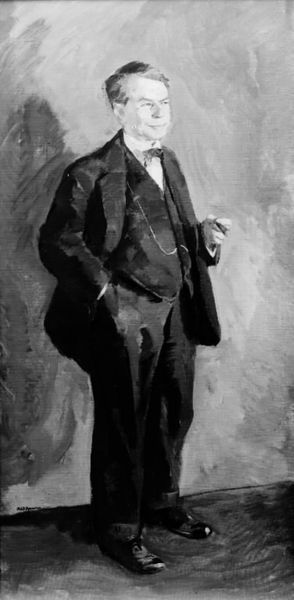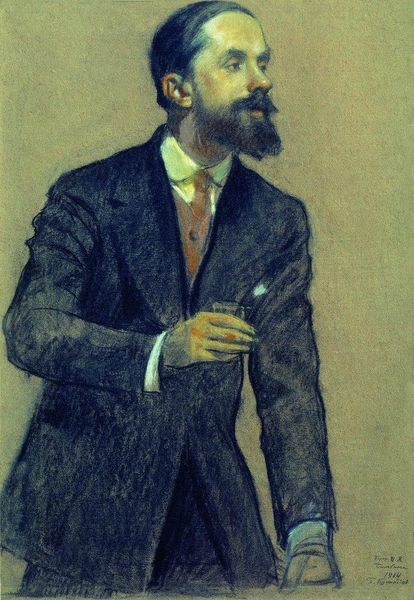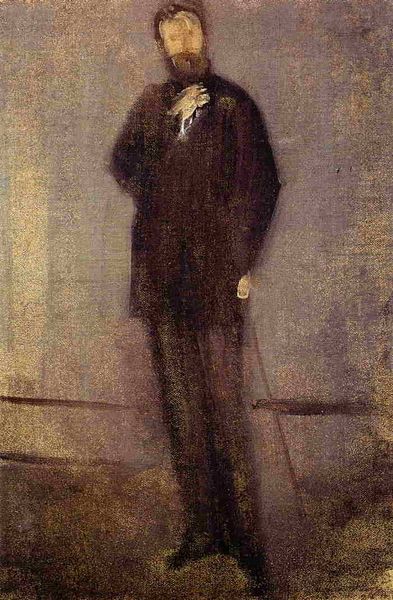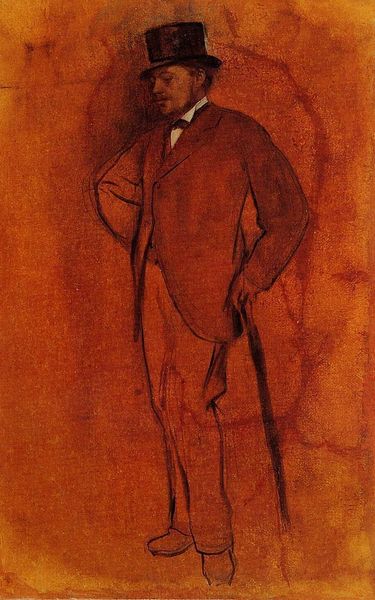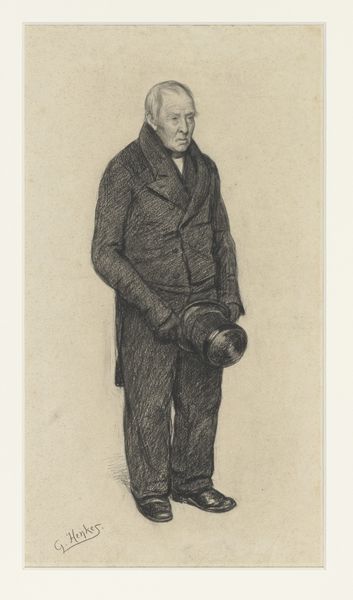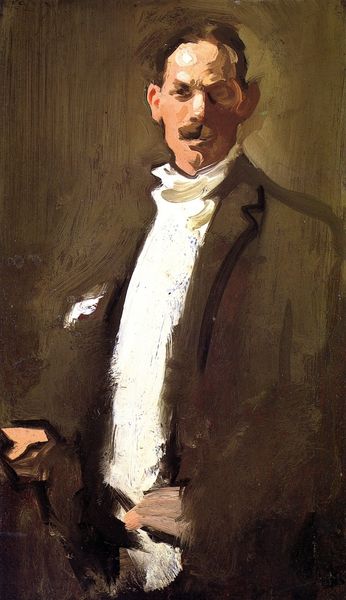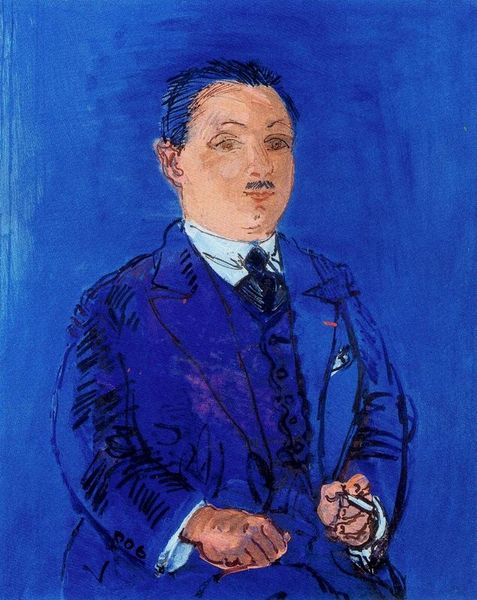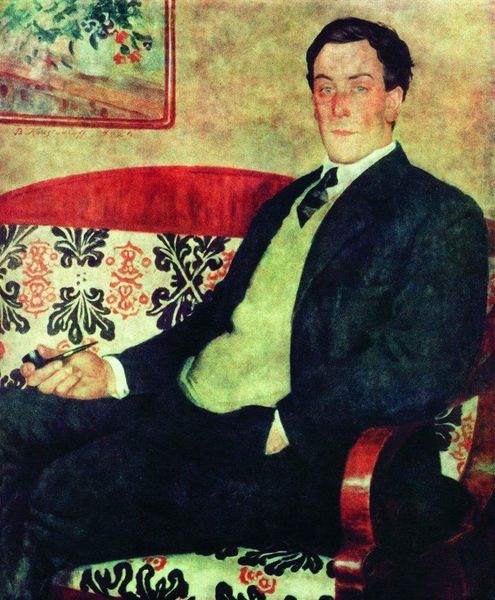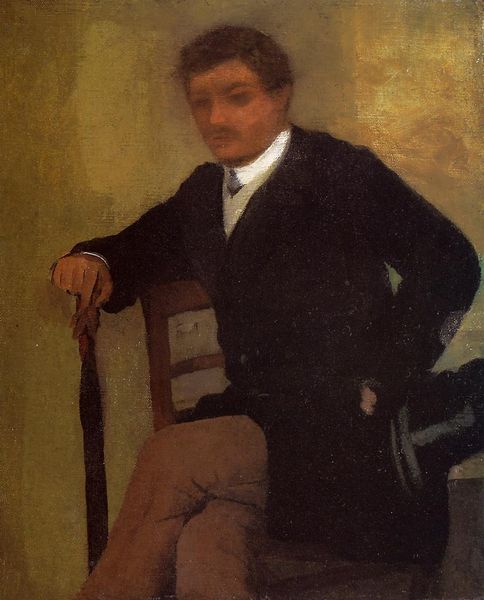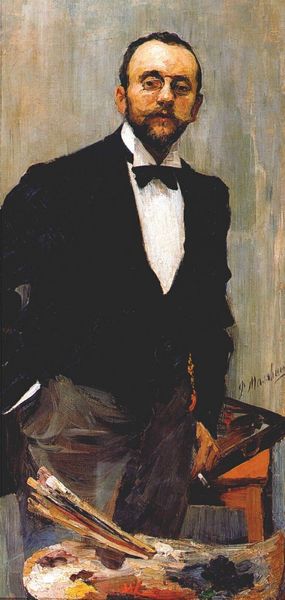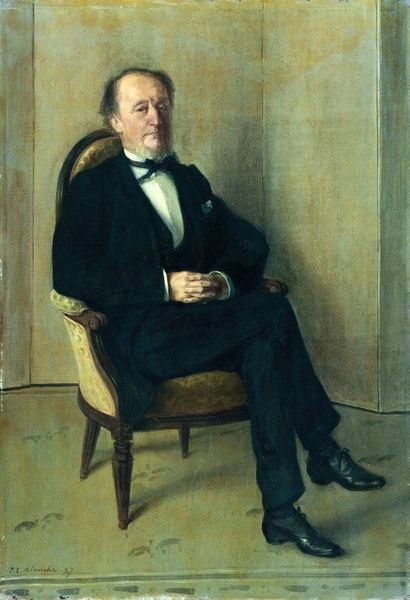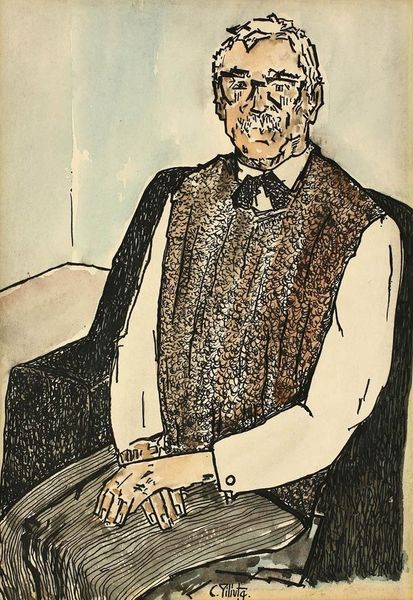
drawing, coloured-pencil, pencil
#
portrait
#
drawing
#
coloured-pencil
#
oil painting
#
famous-people
#
male-portraits
#
pencil
#
expressionism
#
portrait art
Copyright: Public domain
Curator: Boris Kustodiev's 1914 artwork, a rendering simply entitled, "Portrait of G. Narbut," offers an intriguing study in colored pencil. Editor: Immediately, I’m struck by the formal quality contrasted with the intimate expression of the subject. The colors, muted yet distinct, add a certain gravitas, yet something about the angle pulls the eye to the mouth. It feels vulnerable, despite the suit. Curator: That tension is partly generated by the compositional structure. The angle you mention emphasizes the corporeal mass, almost monumentally, while the pastel medium keeps the artwork visually light, defying conventional, imposing portraiture. Editor: True. Thinking about Kustodiev’s context, wouldn’t it have been composed at a time of rapid socio-political transformation in Russia? Considering Narbut's identity is central here. It’s a portrait of an important Ukrainian graphic designer and creator of the Ukrainian coat of arms, rendered just before World War One began. The artistic avant-garde flourished across Ukraine and Russia at this moment; the choice of colored pencil seems significant somehow. Curator: Semiotically, it’s fascinating. The application is broad, not confined within the character's outlines; there are even visible drawing marks to indicate the materials and artist's movements. By drawing attention to its own creation, this piece prompts questions about representation. How are we constructing Narbut and, moreover, what qualities are we assigning him? Editor: Considering Narbut's cultural impact on Ukraine's visual identity, this portrayal invites inquiry into the dynamics of artistic representation and nationhood—of symbolic ownership through portrayal. Is this a sincere attempt at capturing his essence or an ideological placement in society through art? What are Kustodiev's intentions, painting another well-known artist, his contemporary? Curator: The visible marks disrupt conventional notions of “likeness”. By laying bare the act of artistic creation, the drawing questions our expectations of verisimilitude in portraiture, and focuses instead on affect and gesture. What kind of mark can one human leave on another, both in real life and in artistic life? Editor: A resonant query to take away, especially contemplating the artwork's place amidst wider geopolitical currents and artistic movements of the early 20th century. Curator: Absolutely, leaving us to further contemplate the rich complexities intertwined within line, color, and context.
Comments
No comments
Be the first to comment and join the conversation on the ultimate creative platform.
